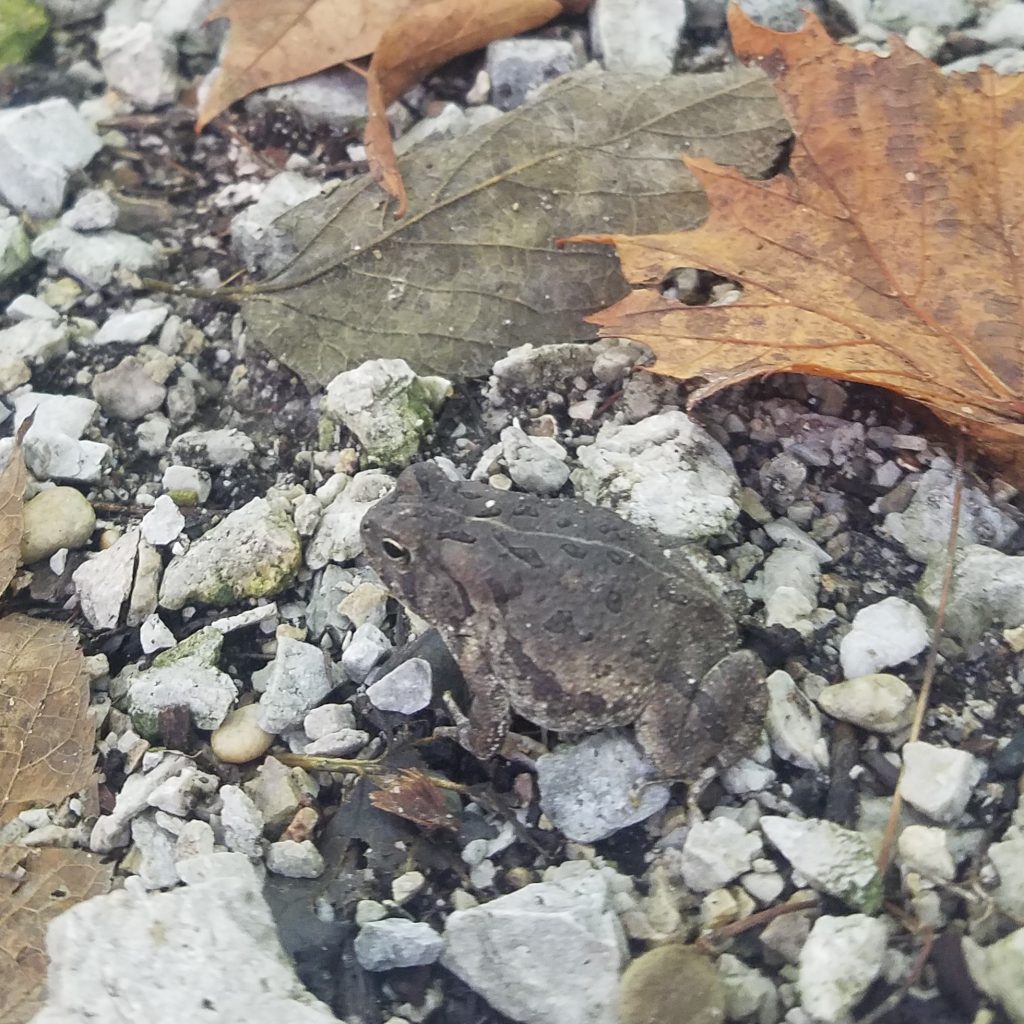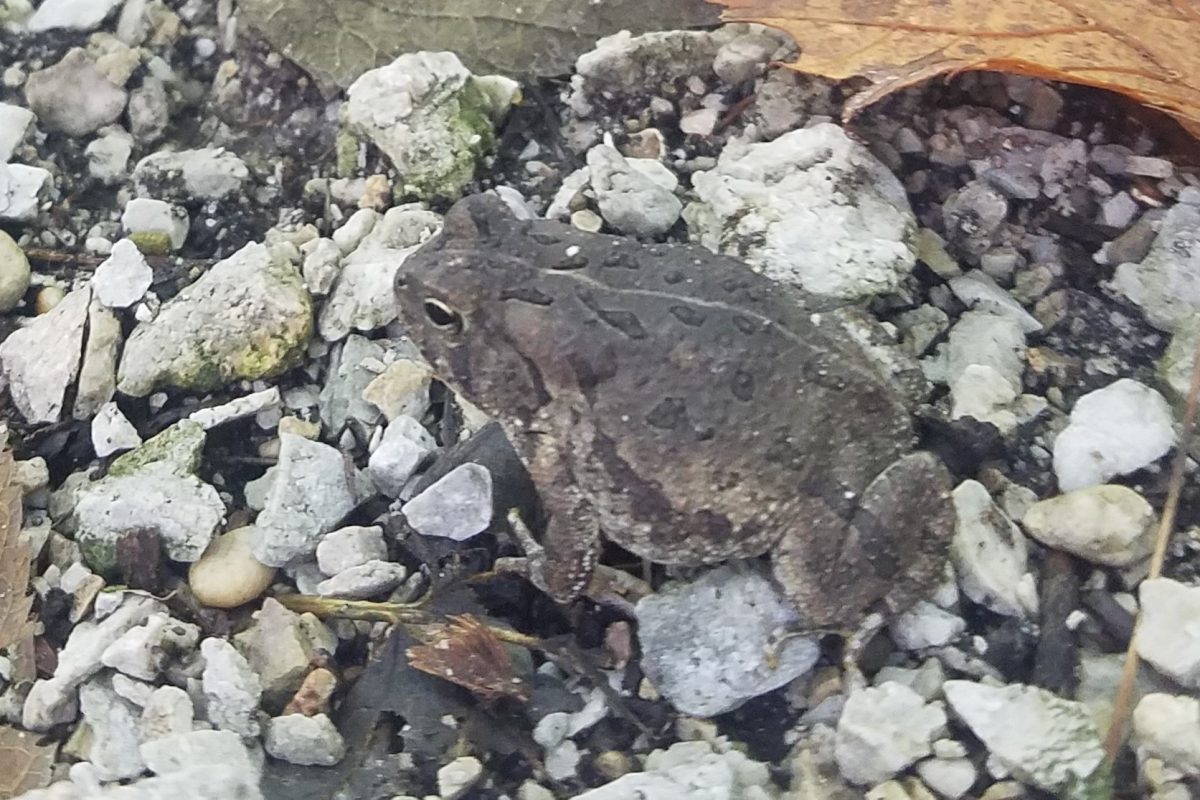After a run recently, we came across a small toad along our path. This little one seemed to have perfected just sitting: relaxed, unperturbed, but ready to act in a moment. I wish that I could say that I’ve mastered sitting in the same way!

While their posture is very different from that of sitting meditation, I do feel that toads are a wonderful model for the attitude we cultivate in our sitting meditation practice. At least outwardly, a toad appears to be still, but relaxed. But, they are perfectly attentive to everything around them, from the insects that will be their next meal to animals that will try to eat them.
And, of course, the annoying hiker who stops to try to take a photo.
While there are many approaches to meditation, those that I prefer remind me of the attitude of a toad: relaxed, still, but entirely alert. In a lot of ways, this attitude is similar to how I have approached my own practice, which has been most strongly shaped by shikantaza (just sitting) meditation in the Soto Zen tradition.
The Zen teacher Shohaku Okumura describes shikantaza in Mind and Zazen:
This is a really simple practice; we do nothing but sit in the zazen posture breathing easily, keeping the eyes open, staying awake, and letting go. That’s all we do in zazen; we do nothing else. Yet even if you try to sit just five minutes in this way you will find it really difficult.
This practice is very simple but simple does not necessarily mean easy. So whenever we become aware that we have deviated from that point of upright posture, deep breathing, keeping the eyes open without focusing, and letting go of whatever comes up, we try to return to that point. In whatever condition we find ourselves in, we just return to posture, breathing, waking up, and letting go. That is what we do in meditation.
Shohaku Okumura
The Zen teacher Dainin Katagiri gave similar advice:
When you are sitting in zazen, don’t think. Don’t use your frontal lobe. Your frontal lobe is sitting with you already, so don’t use it to think. This doesn’t mean to destroy thinking or to keep away from thinking. Just rest; don’t meddle with thinking.
Dainin Katagiri, “Returning to Silence: Zen Practice in Daily Life“
What is the point of a practice like this? That is a complicated question (and teachers such as Dainin Katagiri have said that meditation is useless). But for me, I think that meditation is a key part of how I have tried to put my own life under a microscope, and to look carefully at everything we take for granted. This can help us loosen the grip of a strong emotion, it can help soften the boundaries that seem so rigid between ourselves and others. It can open up more space in our lives.
And, while I do believe the transformative potential of a mediation practice, if I am perfectly honest, I have often struggled with meditation! For much of my adult life, I have felt that I should meditate for a significant amount of time every day, but I have rarely achieved that for more than a few weeks at a time. It has frustrated me, because I do believe that meditation is an important part of my life, to turn my attention back on to itself, as much as I can.
When I saw that toad on the trail, it would be fair to say I envied that little one, to be able to sit so easily!
But truthfully, while I used to feel bad about how difficult it was for me to maintain a regular practice, more recently I have felt that meditation is (for me) similar to exercise (which I also have a conflicted relationship with). I don’t enjoy exercise (usually) in the moment, but I keep at it, because I feel that it is a critical part of my life.
Changing my attitude has been helpful, as I’ve been able to step back from being concerned that I am a fraud (someone who espouses an interest in meditation practice, but who doesn’t genuinely live it). And, I feel that my practice is richer today, for that.
This type of practice has long appealed to me, as it feels built on a premise that it is valuable to turn our attention to our experience, to the totality of life, as much as we can outside of our thinking about the world.
If you have any interest in exploring this style of Zen meditation, I would very much recommend reading as much as you can find. There are many wonderful books out there, and I have especially found it useful to explore collections of talks by Zen teachers. I would recommend Katagiri’s book, “Returning to Silence,” and another collection of his talks, “You Have to Say Something.” I have also found Charlotte Joko Beck to be very influential in my own practice, and would highly recommend her book “Everyday Zen.” And, I am also quite fond of Steve Hagen’s “Buddhism Plain and Simple.”
I think that these readings are a good place to start (but, I would also encourage you to reach out to a community of practitioners as well!). I personally have felt that it has been most beneficial to be part of a community (and have valued times when I lived near a Zen center).
But, I’ve also spent much of my life in locations where going to a center was not feasible. There are many excellent resources today, such as this post, How to do Zazen for the basics of sitting meditation and good visuals. I personally cannot sit in the full lotus position (and usually sit in something close to a quarter lotus pose =) )
Whether in books or through a community of practitioners, I think that you will be able to find many others who have used the opportunity of practice to look carefully at their own life. And, I hope that you too will take some time to just sit.
